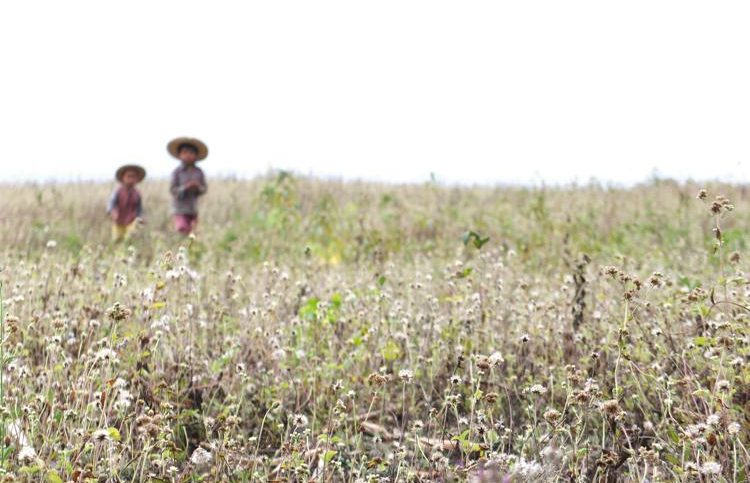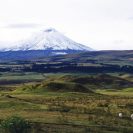By Mohammad alsanea
Close your eyes. Imagine an open land of white mist bordered by distant mountains, in between thousands of heads of dancing trees and silhouettes of ancient Pagodas. Now open your ears and listen to the whisper of an early morning wind. This is Bagan.
To tell you about Burma is to tell you stories of railways, bus stations and dark bumpy roads. For example, I can tell you that in the time it takes me to take the train from Mandalay to Hsipaw in the North, someone has flown from Kuwait to NYC, had probably finished a “random” interrogation at the airport and is currently stuck in traffic on their way to Manhattan. I can also tell you that small plastic bags are very common on bus rides and unlike the paper bags in an airplane, 90% are put to use after a pit stop to the highway local diner. But those things, although they make stories more interesting, are irrelevant and might discourage you from truly experiencing the excitement of traveling through a place like Burma.
My love with Burma or Myanmar (Side note: this is just one of the unique aspects about this country, the dilemma of choosing which name to use. And it does not stop here, but goes further into cities and towns too. To clarify, it is officially recognized by most as Myanmar but I am using Burma due to its common use here.) Anyways, my love started a few years back when I spotted a puppet displayed on the walls of a gallery in Siem Reap. I wanted to meet the person who carved these beautiful wooden marionettes but I was told that “this Burmese monk puppet was handmade in Burma.” Little did I know, that in the years to follow I would find myself alone on a street (now close your nose and imagine stalking stray dogs, chickens and rats!) lost for hours trying to find the one family most known to perform this puppetry art inside their living room in Rangoon (or Yangon).
Burma borders Thailand, one of the most sought-after destinations, China, one of the most powerful economies, and Bangladesh, a country well known to us, yet for some reason it fails to exist in our personal maps. It is like visiting the UAE and not acknowledging that a country as big as Saudi Arabia exists nearby. Those who know of it know of a land of many conflicts and violence, while others may know of a mystical and magical land told in old folk’s tales.
Life in the northern Burmese mountains begins before sunrise as the women build their fires to prepare the meals before heading down the hills to collect water for the day. I was sitting outside the monastery, at the highest point of the village, watching the sun as it rises from behind the mountains. Everything here looks simple; monks chanting as life starts to unfold, while an old woman climbs uphill to collect firewood from the monastery’s grounds. Yet I am sure it is a tough life or maybe it is a simple tough life, I don’t really know. Between my exposed (and I mean this in the most literal term) outdoor shower and the rise of the first sun of 2015 and as I try to ignore my camera and focus on these moments, I cannot help but wonder why do I feel at home in a land I barely touched and amongst a culture I don’t know much about?!
I arrived at Bagan’s bus station around 4 in the morning to find a town that was dark and deserted. I gathered my backpack, along with the only three travelers I found, to hitch a ride into town. I found myself barefoot at the top of a nearby Pagoda at the edge of town catching the sun as it rose from behind the Popa Mountain.
Watching the sunrise in Bagan is like watching a blank canvas coming to life with all your senses. It is magical, yet everything here is real; a culture trying to change to suit its newly acquired tourism status, echoes of monks chanting, farmers plowing the lands, kids learning new scams, it is just like every other place on this planet.
I can tell you as much as you want about Burma. About its history, politics and social conflicts (actually I don’t know much but I can do the reading and tell you, or better yet, you do your own reading) but I can’t tell you about the many people in between, about the life inside their trains or the smiles as you trek from village to village, the taste of a freshly cut pumpkin with lime drizzle and the smell of rice being cooked early in the morning, because these are not stories to be told but experiences that must be felt.
We may choose to believe that we belong to our homes, our names, our passports, our languages, our skin, but we rarely choose to believe that we belong to something far bigger than what is within our premises, that beyond these barriers we simply belong to humanity.








